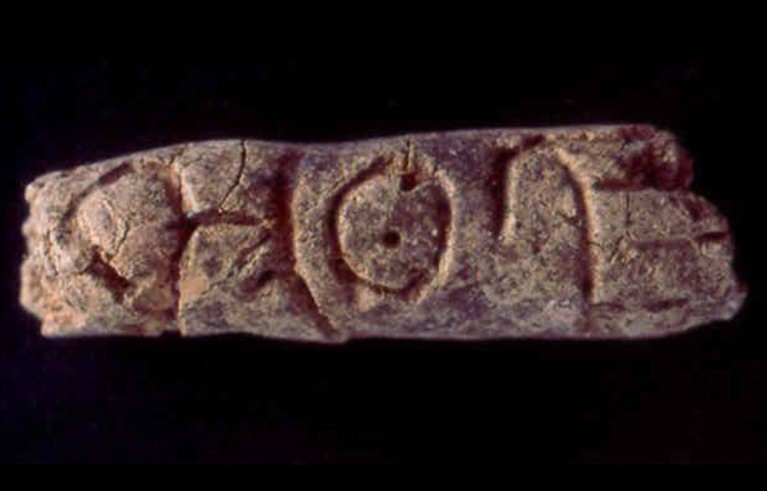
The small clay cylinders are engraved with symbols thought to be letters.Credit: Glenn Schwartz, Johns Hopkins University
Clay cylinders unearthed from a tomb in Syria and dated to 4,400 years ago are inscribed with traces of the earliest known alphabetic writing system, an analysis suggests.
The tomb was discovered in Umm el-Marra near Aleppo in 2004 and contained human remains and other objects from the Early Bronze Age (2600–2150 bc). The items included four clay cylinders, each about the size of a finger, engraved with eight distinct symbols.
First passages of rolled-up Herculaneum scroll revealed
“These inscriptions might rekindle the idea of the location of where we have the earliest alphabet,” says Chris Dobbs-Allsopp, who studies the Old Testament and Semitic languages at Princeton Theological Seminary in New Jersey.
Archaeologist Glenn Schwartz at Johns Hopkins University in Baltimore, Maryland, who co-led the excavation and analysed the inscriptions, now suggests that the symbols represent sounds that correspond to a, i, k, l, n, s and y.
The characters do not correspond to a known language, but Schwartz compared them with characters used in West Semitic languages — including ancient and modern forms of Hebrew, Aramaic, and Arabic — to decode them. The inscriptions might record people’s names or label objects in the tomb, said Schwartz, who presented his findings at the annual meeting of the American Society of Overseas Research in Boston, Massachusetts, on 21 November.
Tomb treasures
Archaeologists found the cylinders in one of ten tombs in Umm el-Marra. The burial areas also contained gold jewellery, silver vessels, an ivory comb and pottery. “Judging from their contents, these tombs belonged to people of the highest social rank,” Schwartz said at the meeting.
The cylinders are each one centimetre thick and 4.7 centimetres long, pierced with a small lengthwise hole. In 2021, using radiocarbon dating, Schwartz and his team determined1 that the tubes originate from around 2400 bc. “It’s 500 years earlier than any other early alphabetic inscription we have. So that’s surprising,” says Dobbs-Allsopp.
Before their discovery, a script from 1900 bc in Egypt was the oldest known alphabetic writing; it turned hieroglyphs into alphabetic letters of West Semitic languages. Hieroglyphs are not considered an alphabet because they mainly use pictures to represent entire words, rather than consisting of a set of letters that each correspond to a sound.
The symbols appear 11 times in total on the cylinder and some are repeated — evidence that they might be part of an alphabet. Two of the four cylinders seem to have the same sequence, finishing with the same symbol at their unbroken ends. The longer the sequence of symbols, the more likely it is to represent writing rather than comprising non-linguistic symbols, said Schwartz.
Semitic-languages specialist Theodore Lewis at Johns Hopkins, who worked with Schwartz, suggests that one sequence, which can be translated to ‘sl’nw’, might be the name Sillunu found in texts from the site of Ugarit, an ancient city on the Syrian coast, and derived from a word that means rock.






